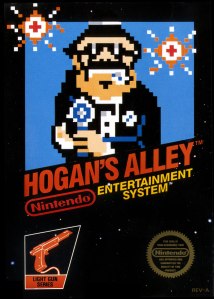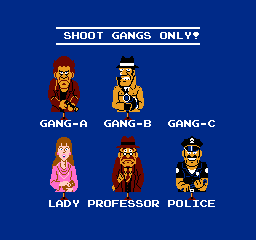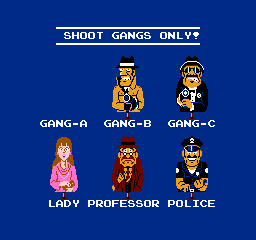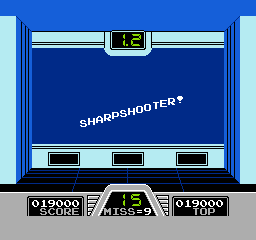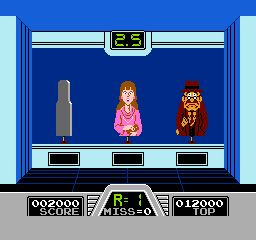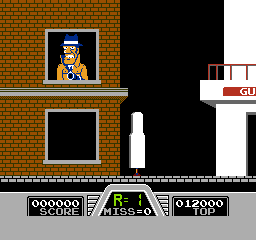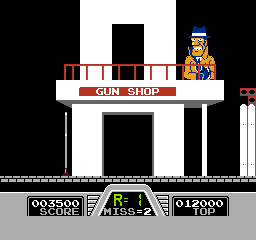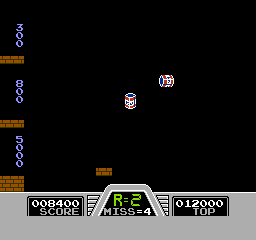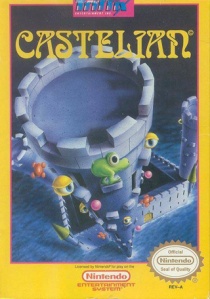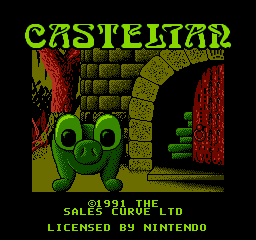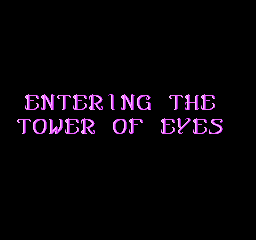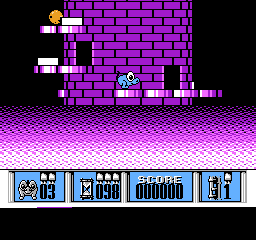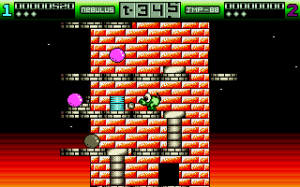Looking at the NES library, when you think of light gun or zapper games the first game that springs to mind is always Duck Hunt, but there was a plethora of fine gun games on the console… wait – is there some Deja Vu thing going on? Well anywho games on the NES that utilised the light gun, or the zapper, or however you call the gun that were good were far and few between, with the most recognizable being Duck Hunt. Another game that utilised the light gun was Hogan’s Alley so grab your leather jacket and your shades and prepare to take out the vermin that sprawls the city, or shooting range, hell wherever the bad guys reside these days.
Hogan’s Alley is a black box light gun game that was released in Europe in 1987, the simple aim is to shoot the bad guys and spare the innocent folk. Sounds easy? Well, in a similar vein to Wild Gunman, you have to shoot the bad guys in a specified tight time limit and if not you record a “miss”. Enough misses and it is game over. Although you don’t get to see your character, it would be nice to think that your character is a Clint Eastwood-type chiselled good-looking rather than an overweight Mario-type character that popped up in a lot of the games that was released at the time, be it as an umpire at Tennis or referee in Punch-Out.
When you pop the cartridge in and turn the console on, you get three options:
Hogan’s Alley A
Three cardboard cut outs will appear on screen – shoot the bad guys with guns and avoid the innocent civilians set in a police training environment. At the top of the screen in green shows a number which relates to how long in seconds you have to shoot the bad guys. Sometimes it may only be one bad guy on screen, however the later in the game you get the more chance you have of trying to shoot more than one character on screen within the allotted time frame.
Hogan’s Alley B
Same premise of shooting bad guys and not shooting the civilians however this time it is set outdoors where the bad guy cutouts appear in windows and on the street, even in shops. Although there is no timer on screen, you only have a certain amount of time in order to shoot the bad guys on screen. The same characters that appear in game mode A appear in game mode B, so it’s good that you don’t have a different set of characters that you need to try to remember.
Trick Shot
No bad guys in this game mode, the premise being that you have to shoot cans that fly from the right hand side of the screen, and you need to shoot them onto three spaces that are on the left side of the screen which correlate to differing points value. The top space has the lowest points value but in theory should be the easiest for you to shoot the can into, where the bottom shelf as it were has the most points value but is deemed the most difficult to shoot into, with a short awkwardly-placed block there to hinder you. It makes a nice change to shoot cans rather than cardboard cutouts of people.
In all three game modes the most challenging aspect is yourself – how does that work? For game mode’s A or B it’s the pressure knowing that you only have a certain time limit to shoot the required number of bad people (which numerically doesn’t show on the screen), so the first few milli-seconds you’re counting how many bad guys are on the screen and then reacting to this. You need to have sharp reflexes, sharper than a hedgehog eating a ghost chilli pepper washed down with Tabasco sauce. For game mode C, the challenge is trying to let the can get as close to the bottom as possible and shooting it so that you have a chance of getting the can into the bottom shelf. With multiple can’s on the screen at the same time, you need to forget that hedgehog and have your Spidey-senses on high alert.
Hogan’s Alley is a fine addition to the NES library and is more than just shooting bad guys, or cardboard cutouts of them at least. You have to think about what bad guys are on the screen and try to shoot them in a small amount of time, or shooting the cans at the right time so that the trajectory is correct and your can goes into a space on the left hand side of the screen. It’s great that although the premise of game mode A and B are the same, the background differs which gives it a fresh take. Although much cannot be written about Hogan’s Alley, if you’re looking for a variation on the NES on the light gun game then Hogan’s Alley certainly achieves this. It is more similar to Duck Hunt with the game modes than with Wild Gunman but all three are worthy to have in your collection. Copies of the game aren’t that common but it is worth the extra pennies so pick up a copy, I mean how many times can you shoot ducks and get laughed at by a dog?
Rating – 5 out of 5
